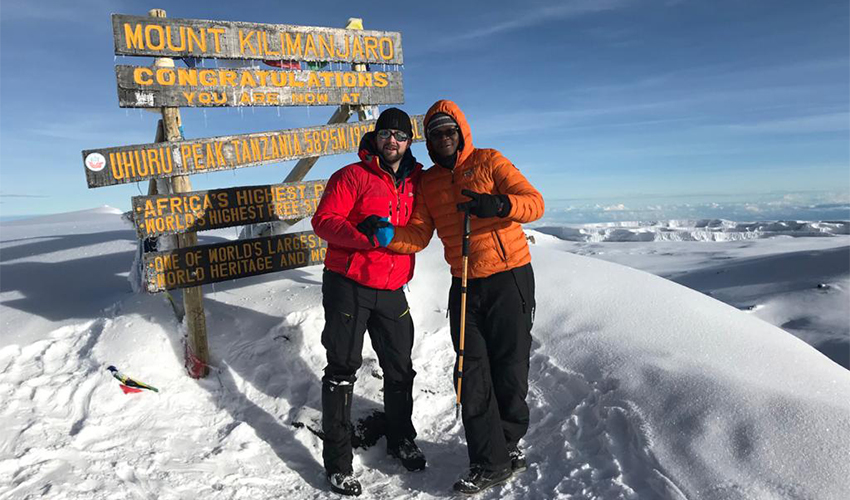The Lemosho route is one of the newer routes on the mountain, and a superb choice for your climb.
It is our preferred route due to its ideal balance of low traffic, beautiful scenery and a high summit success rate. The route approaches Mount Kilimanjaro from the west, beginning with a long drive from Moshi to Londorossi Gate. From there, the first two days are spent trekking through the rainforest to Shira Ridge. Unlike the popular Machame route, which simply intersects the Shira Plateau, the Lemosho route crosses the entirety of the plain from west to east in a pleasant, relatively flat hike. An added bonus is that climbers will encounter low traffic until the route joins the Machame route. Afterwards, Lemosho follows the same route through Lava Tower, Barranco and Barafu, known as the southern circuit. Descent is made via the Mweka route. The minimum number of days required for this route is six days, although eight days is best. Lemosho is considered the most scenic route on Kilimanjaro, and grants panoramic vistas on various sides of the mountain. Thus, Lemosho is highly recommended.
Mountain Gear Check-list
- A Rucksack for Your Equipment – To Be Carried By Porters
- Sleeping Bag [Mountain Type], Day Pack – For Your Personal Items
- Hiking, Climbing Boots, Camp Shoes, Trainers Not Sandals
- 2 Thin Polypro Type For Quick Drying, 4 Thick Wind Pants, Wind shirts
- High Gaiters, Warm Pants [Fleece], Jacket Or Pullover, 1 Rain Parka
- 2 Underwears,1 Hiking Shirt, Long Sleeve, 1 Bandanna
- 1 Warm Hat, 1 Hiking Shorts, Pants, Balaclava, Fleece Neck Warmer
- Headlamp, Bulb, Batteries, First Aid Kit, Pocketknife, Sunglasses, Snow
- Goggles, Water Purification Tablets
- Toiletry Item, Plus Sunblock, Lipsalve, and Moisturizer
- Walking Stick

